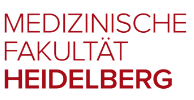LCCH research projects
The interdisciplinary Liver Cancer Center Heidelberg (LCCH) was established in 2012 and comprises all disciplines being involved in the treatment of HCC patients in Heidelberg. The LCCH represents an excellent patient care.
The LCCH supports leading and innovative trials, for example a phase I-study with heavy ion treatment and a phase II-study with oncolytic viruses as well as studies with new targeted substances.
The Umbrella-concept was developed to allow patients a systematic access to innovative clinical trials.
The leading liver pathology center with more than 4.000 liver pathology cases per year, the leading hepatobiliary-surgical center, and the liver transplantation center as well as the center for interventional radiology are important motors for research and translational HCC programs.
Clinical-scientific aims of the LCCH are:
- Identification of molecular mechanisms causing liver cancer and their potential for clinical application (HCC-Forschungskonsortium Heidelberg/Hannover SFB/TRR77)
- Strategies to overcome a HCV-persistence (Ruggieri et al. Cell Host Microbe 2012, Bauhofer et al. Gastroenterology 2012)
- Research of bridge axis of metabolic dysfunction and HCC-development (Eichelbaum et al. Nat Biotechnol 2012)
- Identification of mechanisms of chronic liver hepatitis (Pusterla Hepatology 2013)
- Determination of epigenetic changes and their importance for HCC (Singer et al, Mol Cell 2012, Neumann et al, Hepatology 2012)
- Development of innovative phase I/II-trials based on the findings of the HCC-research program
- Development of diagnostic algorithms of HCC (Schirmacher et al. Gastroenterology 2013, Breuhahn et al. Hepatology 2011)
- Development of study programs with prospective testing of biomarkers in patients‘ tissues (Umbrella-Konzept, etabliert in 2013).
- Sustainable improvement of the basis for diagnostic and treatment of HCC in Germany by coordinating the clinical and diagnostic research results of the participating centers (German Alliance for Liver Cancer „GALC“)

